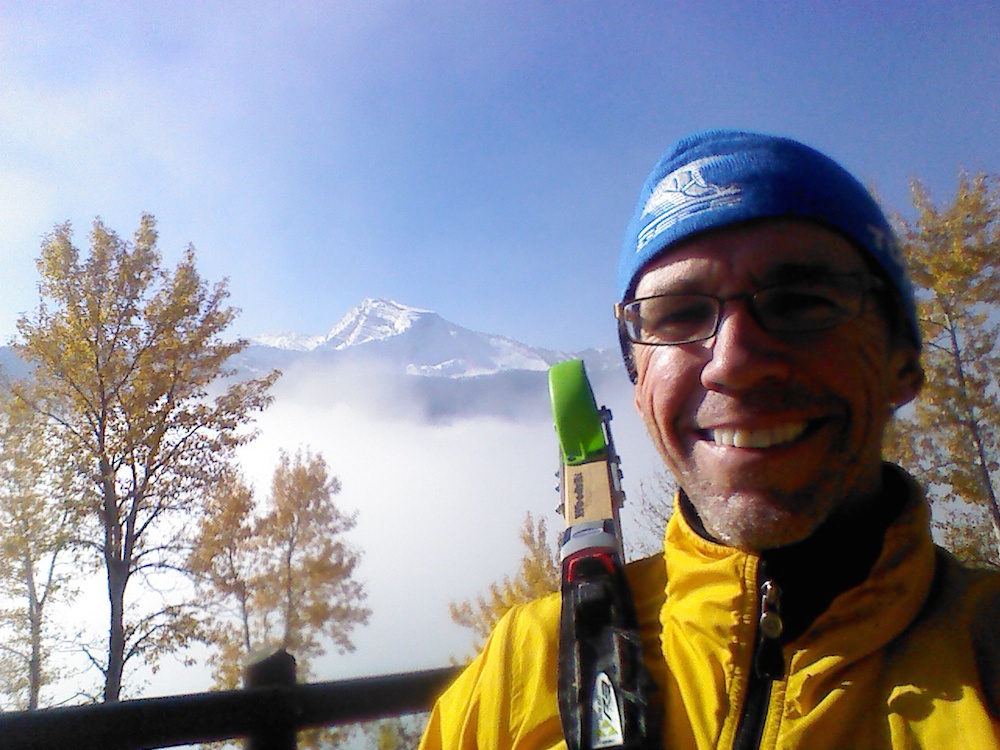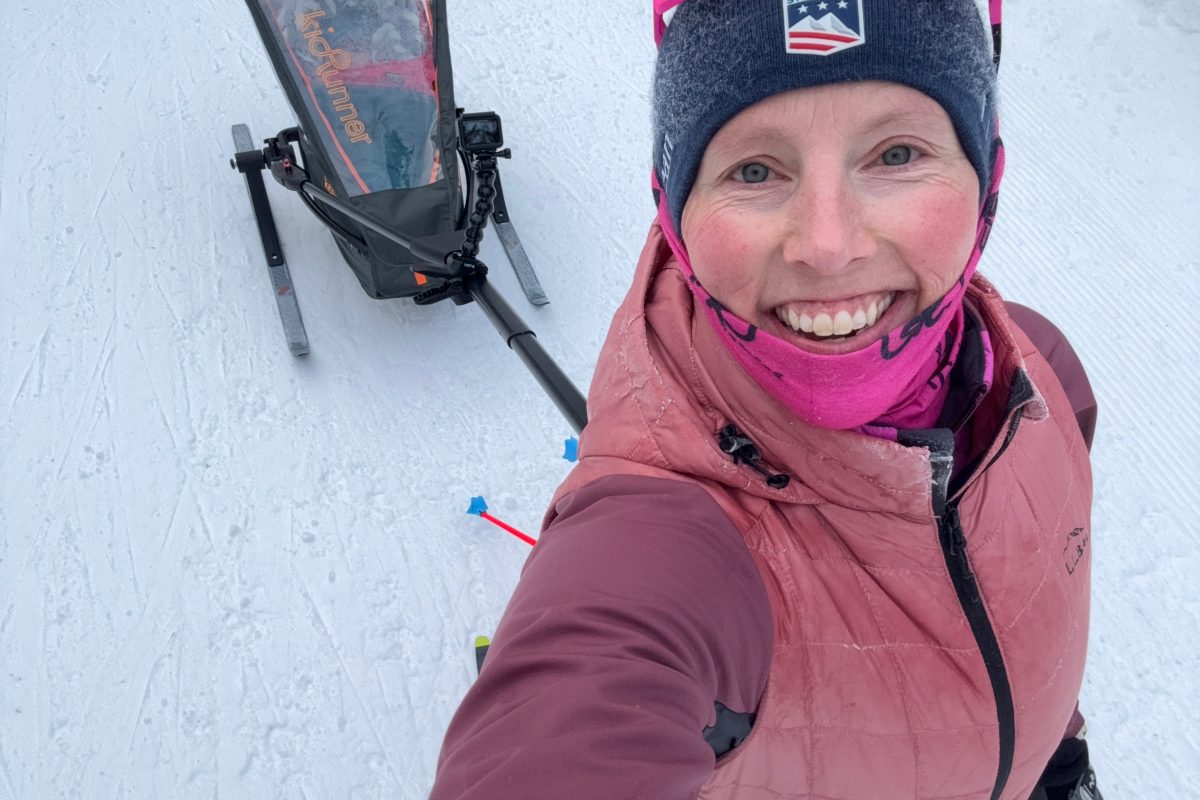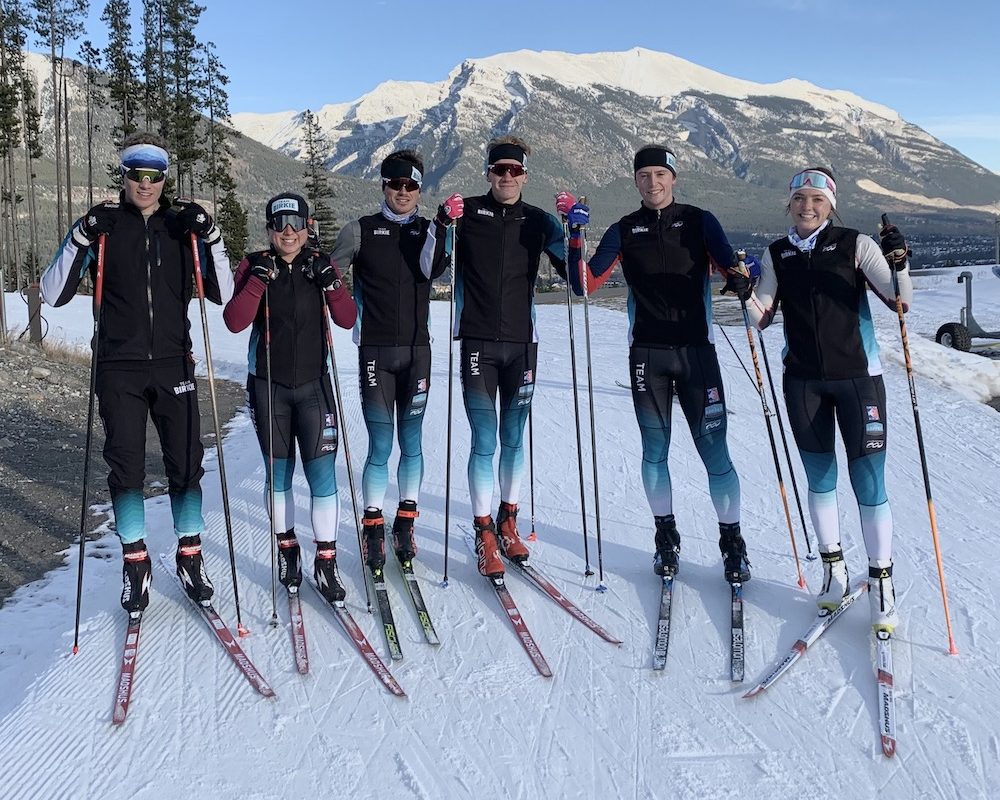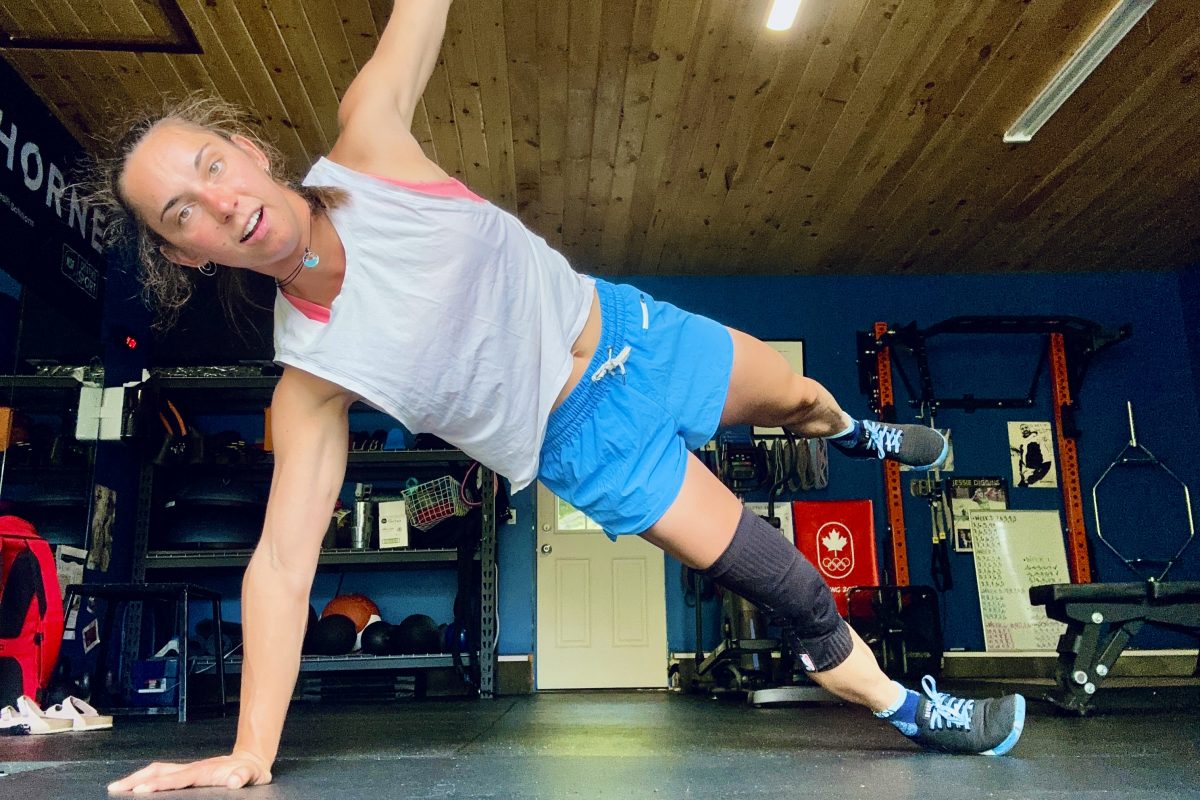
Editor’s Note: This article appeared last November on MakeitMissoula.com and was written by FasterSkier’s Para Nordic Contributor Mark Vosburgh.
Elite nordic racers and Olympic hopefuls train on rollerskis during the offseason to prepare for their transition to snow. Are they right for us mortals who are recreational skiers or occasional citizen racers? Last year, this author decided to find out.

What are they?
Rollerskis are basically skis with wheels that are designed to simulate classic and skate styles of nordic skiing. They are mounted with ski bindings and so you “roll” in your regular ski boots.
Most have aluminum shafts but I bought a pair of skate skis made of wood from a company called Woodski. My skis had a trial period of 30 days which was good, because I really wasn’t sure if they would work out for me.
What about poles?
Regular ski poles are fine but you’ll need to buy some hardened steel ski tips ($15) without a basket and install them. I bought a spare set of carbon fiber poles for $65 that I reserve for dryland training. You’ll also need a diamond file to keep your tips sharp so they “stick” in the pavement.
Woodski President Peter Breu was very helpful in answering my questions and setting me up with gear. He has some great videos on his website about how to file ski tips etc.
Where to rollerski?
This was my main concern. Could I find enough places to ski? This has taken some creativity and exploration but I’ve discovered that while smoother pavement is better, my skis can handle a bit roughness and bits of small gravel. I’ve skied in subdivisions, on frontage roads, paved country roads, paved forest roads, bike paths and just recently, the Going to the Sun Road in Glacier National Park.
I look for low traffic areas (the Going-to-The-Sun Road in Glacier National Park was closed to cars when I went), and I wear bright yellow shirt or jackets. I’ve been treated really well by cars and I’m sure the high visibility clothes are the key.
How do you stop?
My skis came with a simple break [sic brake] system that vastly expands the places I’m willing to ski. It takes practice to learn how to use them and learn their limits.
What’s the final verdict?
I love these things! Its amazing how well they simulate skiing on snow. I’ve had some blissful days “skiing” in beautiful locations this summer and fall. I have no doubt I’ll be WAY ahead of the curve come ski season.
Any caveats?
Oh yeah. Falling on pavement REALLY hurts. I still have memories of painful fall when I but borrowed a friend’s skisfew years ago.
There is a learning curve. I’ve XC skied for years and it took me about a month of roller skiing to feel comfortable. I started very slowly with full knee, elbow pads, helmet and gloves on flat terrain and built gradually.
World-class athletes have had career ending injuries and a friend of mine suffered a broken wrist on them. Roller skis deserve respect!
Final word.
I’ve found rollerskis to be a great ski training tool, which I expected. There’s really no better way to train up all those balance stabilizer, arm, back, core and leg muscles you use when nordic skiing.
Mark Vosburgh
FasterSkier’s Para-Nordic contributor, Mark Vosburgh lives in Missoula, Mont., where he works as a Wildfire Scientist for the US Forest Service. In addition to being a chemical engineer, Mark is a cross-country and backcountry skier, bluegrass musician, and biker. He’s also a freelance writer for numerous publications including for 48 Degrees North and MakeitMissoula.com.




3 comments
Ben Arians
June 2, 2014 at 4:13 pm
Hopefully it’s a brake system, not a “break” system. Also I was kind of shocked to see the rollerskier at the end of an NBC Sports promo this weekend. Nice job, NBC.
skidog
June 3, 2014 at 5:49 pm
Great article. With skate rollerskiing, I find it is challenging for most people to get over their skis (flat ski) to the degree that they can with the wider based snow skis. It took me a long time to trust my wheels enough and I still think I ski between my roller skis a little more than on snow. I found that, once back on snow, it takes a while to get used to the give of the snow and that with the rubber/pavement friction I develop a bit of a twisting kick that needs correction. I also found that the medium speed wheels that my F1 Sprints came with were faster than snow and I was a little deflated when winter came and I was slower than I thought I would be. If anyone is up for an article on snow/road comparisons or training tips for maintaining good technique on roller skis I’d be interested in reading it! Or if anyone has links, I will follow them.
Mark Vosburgh
June 4, 2014 at 1:55 pm
skidog, You might want to checkout my post on the cxc academy they have a ton of excellent roller ski and on-snow technique videos. They also have a free trial period for you to explore the site.
Mark
http://fasterskier.com/article/fear-not-the-training-plan-cxc-academy-explained/